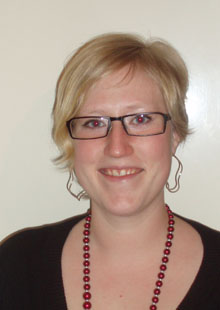Research
Mathematical models are commonly used in technical applications to describe the behavior of a system. These models can be estimated from data, which is known as system identification. Usually the models are used to calculate the output for a given input, but in this research, the estimation of inverse models is investigated. That is, we want to find a model that can be used to calculate the input for a given output. In this setup, the goal is to minimize the difference between the input and the output from the cascaded systems (system and inverse). A good model would be one that reconstructs the original input when used in series with the original system.
Different methods for estimating a system inverse exist. The inverse model can be based on a forward model, or it can be estimated directly by reversing the use of input and output in the identification procedure. The models obtained using the different approaches capture different aspects of the system, and the choice of method can have a large impact.
Inverse systems turn up in many different applications, such as sensor calibration and power amplifier (PA) predistortion. PAs used in communication devices can be nonlinear, and this causes interference in adjacent transmitting channels, which will be noise to anyone that transmits in these channels. Therefore, linearization of the amplifier is needed, and a prefilter is used, called a predistorter. In Ylva Jung's research, the predistortion problem has been investigated for a type of PA, called outphasing power amplifier, where the input signal is decomposed into two branches that are amplified separately by highly efficient nonlinear amplifiers, and then recombined. If the decomposition and summation of the two parts are not perfect, nonlinear terms will be introduced in the output, and predistortion is needed.
Predistorters have been constructed based on a model of the PA. In a first method, the structure of the outphasing amplifier has been used to model the distortion, and from this model, a predistorter can be estimated. However, this involves solving two nonconvex optimization problems, and the risk of obtaining a suboptimal solution. Exploring the structure of the PA, the problem can be reformulated such that the PA modeling basically can be done by solving two least-squares (LS) problems, which are convex. In a second step, an analytical description of an ideal predistorter can be used to obtain a predistorter estimate. Another approach is to compute the predistorter without a PA model by estimating the inverse directly. The methods have been evaluated in simulations and in measurements, and it is shown that the predistortion improves the linearity of the overall power amplifier system.
Main supervisor is Martin Enqvist.
Publications
Theses
[Diss] Ylva Jung. Inverse system identification with applications in predistortion. [diva]
[Lic] Ylva Jung. Estimation of Inverse Models Applied to Power Amplifier Predistortion. [pdf]
Journal Papers
[J2] Ylva Jung, Jonas Fritzin, Martin Enqvist, Atila Alvandpour. Least-Squares Phase Predistortion of a +30dBm Class-D Outphasing RF PA in 65nm CMOS. IEEE Transactions on Circuits and Systems - Part I: Regular Papers, Vol 60, No 7, pp 1915-1928, July 2013. [pdf]
[J1] Jonas Fritzin, Ylva Jung, Per N. Landin, Peter Händel, Martin Enqvist, Atila Alvandpour. Phase predistortion of a class-D outphasing RF amplifier in 90nm CMOS. IEEE Transactions on Circuits and Systems - Part II: Express Briefs, Vol 58, pp 642-646, 2011. [pdf]
Peer-reviewed Conference Papers
[C3] Ylva Jung and Martin Enqvist. On estimation of approximate inverse models of block-oriented systems. To be presented at the 17th IFAC Symposium on System Identification (SYSID), October 2015.
[C2] Ylva Jung and Martin Enqvist. Estimating models of inverse systems. Presented at the 52nd Conference on Decision and Control (CDC), Florence, December 2013. [pdf]
[C1] André Carvalho Bittencourt, Patrik Axelsson, Ylva Jung and Torgny Brogårdh. Modeling and Identification of Wear in a Robot Joint under Temperature Uncertainties. Presented at the 18th IFAC World Congress 2011, Milan, August-September 2011.
Other Papers
[O1] Svante Gunnarsson, Ylva Jung, Clas Veiback and Torkel Glad. IO (Implement and Operate) First - An Alternative Way to Approach the Automatic Control Subject. Presented at the 5:e Utvecklingskonferensen for Sveriges ingenjorsutbildningar (Ingkonf), Uppsala, Sweden, February 2016.
Technical Reports
[TR2] Ylva Jung. Predistortion of a radio frequency power amplifier. Department of Electrical Engineering, Linköping University, Sweden. Technical Report nr: LiTH-ISY-R-2974, October 2010. [pdf]
[TR1] Patrik Axelsson and Ylva Jung. Lego Segway Project Report. Department of Electrical Engineering, Linköping University, Sweden. Technical Report nr: LiTH-ISY-R-3006, March 2011. [pdf]
Master's thesis
Ylva Jung wrote her Master's thesis Local Sensitivity Analysis of Nonlinear Models - Applied to Aircraft Vehicle Systems at SAAB Aerosystems in Linköping during 2009.Funding
The research is funded by Excellence Center at Linköping - Lund in Information Technology (ELLIIT), Center for Industrial Information Technology at Linköping University (CENIIT) and Swedish Research Council (VR) Linneaus Center CADICS.

PhD Student in Automatic Control
(Swedish: Doktorand i reglerteknik)
- Phone:
- +46 13 28 40 58
- Mobile (private):
- +46 70 601 65 75
- E-mail:
- ylvju@isy.liu.se
- Address:
- Dept. of Electrical Engineering
- Linköping University
- SE-581 83 Linköping
- Sweden
- Visiting Address:
- Campus Valla
- Building B
- Room 2A:581 (in the A corridor on the ground floor between entrance 23 and 25)
Page responsible: Ylva Jung
Last updated: 2019-02-12
 LiU startsida
LiU startsida
